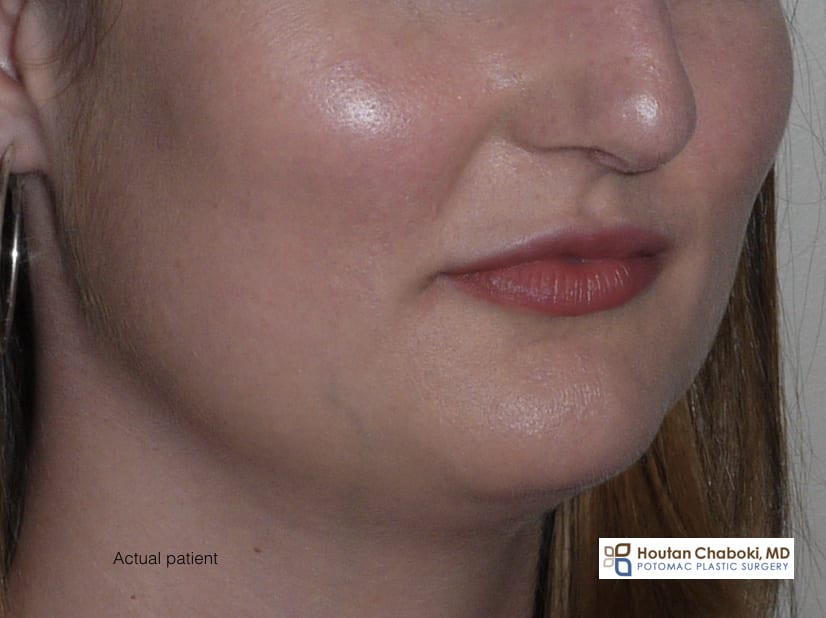
Healthy skin is considered smooth, even color, firm, hydrated, protective, full, and free of imperfections. Medical grade skin care and office treatments can help improve skin health and appearance. This patient follows a healthy skin care regimen.
Patients often ask their facial plastic surgeon for skin care advice to get healthy skin. Facial plastic surgeons have an added perspective as they treat all the tissues of the face, eyes, and neck and perform both surgical and nonsurgical treatments to help one look their best.
Healthy skin has various qualities. It’s not just youthful per se. Dermatologists and plastic surgeons consider healthy skin as smooth, even color, firm, hydrated, protective, full, and free of imperfections. Treatments to achieve healthy skin can be divided into preventative, therapeutic, and maintenance with treatments overlapping in purpose. For example, daily sunblock achieves all three purposes for healthy skin.
We’ve reviewed basic skin care and anti-aging treatments in previous blog posts, including discussions on cost-effective skin care without a laser. Many of the good lifestyle choices for your general health are also great for the skin. Healthy people simply look better.
The cellular components of skin that keep it healthy degrade with age, and this breakdown accelerates from factors that aren’t good for our health such as UV exposure and tobacco use. We encourage patients, especially if undergoing plastic surgery, to quit smoking.
Smooth
Healthy skin has a soft and smooth surface. There aren’t areas that are rough, irregular, or scaly.
Treatment with effective exfoliation, both natural and assisted through skin care, facials, and peels can restore rough skin.
Even color
Healthy skin also has a relatively uniform color, which is evenly distributed. There are only so many melanocytes, the skin’s pigment producing cell. These cells change with time and damage to create darker and lighter spots. A uniform color can be restored with treatments such medical grade skin care, light peels, or skin resurfacing.
Firm or tight
Skin should have an appropriate firmness to it, with strength from its collagen and elastin. These skin components break down with time resulting in excess skin. Loose or sagging skin is more often visible in the eyes and brow, which causes hooded eyes, covered eyelashes, and wrinkles. Loss of natural skin tightness also is seen in the neck, as a component of a double chin.
Skin laxity of significant degree is primarily improved by plastic surgery. Prevention from a young age can help keep skin firm and limit loss of its collagen and elastin and possibly delay the need for surgery in select patients.
Hydrated
Healthy skin is not dry or flaky. Keeping your skin hydrated is achieved by promoting your bodies own hydration by drinking plenty of water and topical moisturizers. Many patients like to use a lighter moisturizer in the morning and a heavier moisturizer at night as part of daily routine. Cold creams are popular before going to bed to help hydrate the skin.
After facelift surgery, we encourage skin hydration with heavy, bland moisturizers such as petrolatum jelly to minimize scars, reduce redness, and soften skin.
Protective and Tolerant
Healthy skin provides a strong barrier from the outside. Remember that the skins primary function is a shield to protect the body from a harsh environment. Don’t pick, scratch, or manipulate the skin unnecessarily, which gives opportunity for bacteria to enter the skin and cause inflammation.
Full contour
Healthy skin doesn’t appear hollow or sunken. It has an appropriate thickness and fullness. Skin looses its volume with age. Adding volume and contour to the skin can be achieved with injectable facial fillers such as Restylane®, Juvederm®, and Belotero®.
Free of imperfections
Skin conditions such as acne, rosacea, and melasma create imperfections in all ages, which can frustrate patients. Large pores are undesirable too. Topical and oral prescriptions, including antibiotics and anti-inflammatory medications, can help treat these conditions.
We aren’t talking about freckles or moles, which are more than imperfections which should be checked by a board-certified physician.
How does one achieve healthy skin?
Much of basic routine health care and anti-aging treatments can be done on your own, without a trip to the plastic surgeon. In conjunction with the basics, medical grade skin care is often added as both prevention, treatment, and maintenance. Prescription topical creams and ointments can help achieve more smooth skin with uniform color, such as tretinoin. Chemical peels (ex. TCA) and laser resurfacing can reduce imperfections and firm the skin. Liquid facelift office injections, ex. Botox® and facial fillers, are often added at least twice yearly to add volume and soften imperfections and wrinkles. Finally, surgery may be required for those with significant loss of facial volume or excess skin laxity.
Speaking with a trusted facial plastic surgeon and developing a plan can help patients achieve their desired results.

Leave a Reply